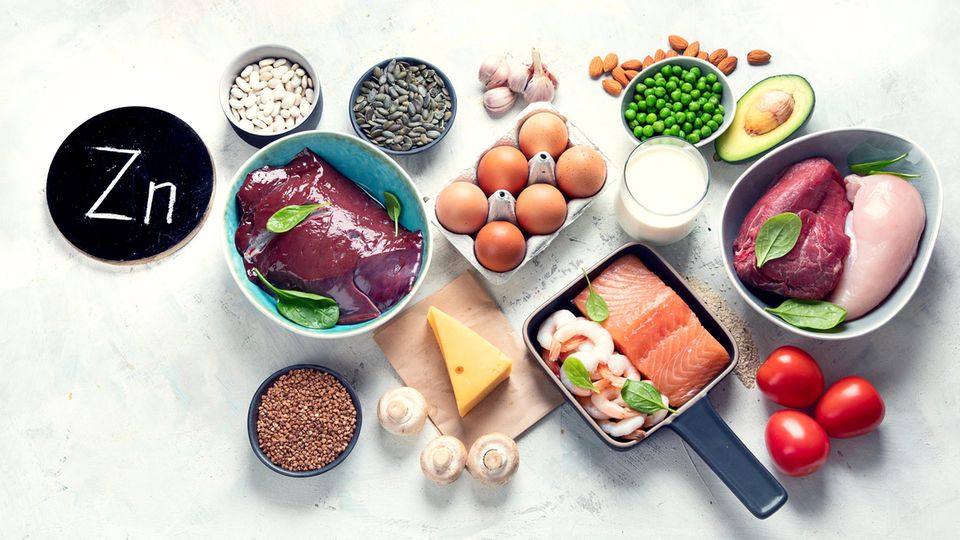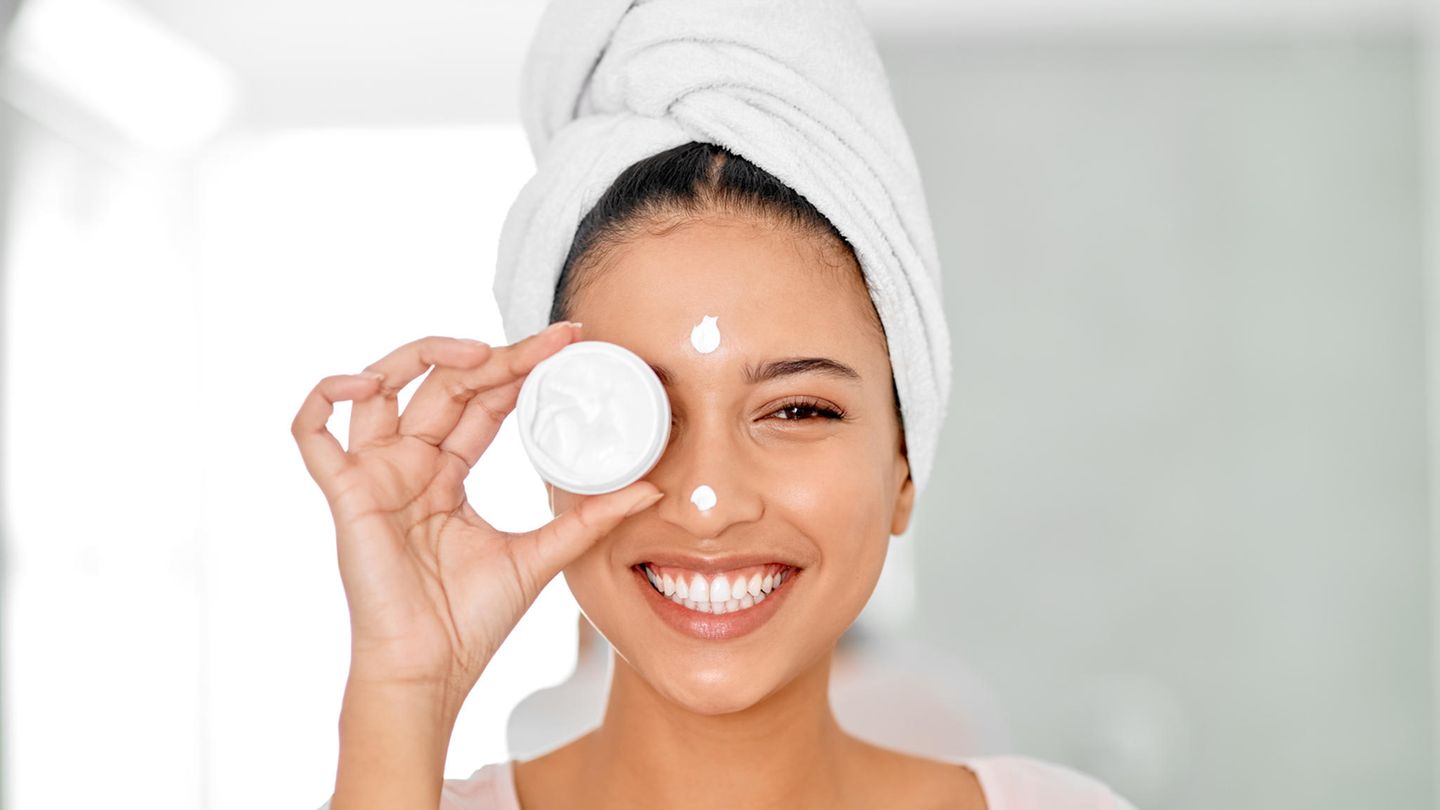Blemishes are an annoying problem for many people, although there is a wide range of cosmetic products available. What many don’t know, however, is that zinc ointment is a much more effective remedy for pimples.
Perhaps you already know zinc ointment from medicine, as it is also used for is used for minor injuries (including abrasions and skin irritations), as it promotes self-healing of the skin. Your antibacterial,But antiseptic and astringent properties can also help fight pimples. The zinc oxide contained in the ointment can bind and absorb water – in other words, it removes moisture from the skin and thus deprives bacteria of the breeding ground they normally need to multiply and promote skin impurities. In plain language this means: Zinc ointment dries out pimples, as it works directly on the skin surface and does not have to penetrate the circulation first. However, it is important that you only use the ointment in a targeted manner. You can find out exactly how this works here.
How to properly apply zinc ointment
Due to its composition of zinc and oxygen, the zinc oxide contained in zinc ointments works like a disinfectant: It absorbs the wound secretion, fights the bacteria and ensures that no pus can form – and thus the pimple dries out. The inflamed sebum glands, which lead to the contamination of the skin, are literally sucked out. At the same time, the zinc forms a protective film on the skin so that it can regenerate more quickly.the It is not absorbed like normal anti-pimple creams, which is why it should not be applied over a large area. And not in the morning, but rather before going to bed so that it can work overnight.
To use it, proceed as follows:
- First, clean your face thoroughly and remove any make-up residue.
- Take a cotton swab and apply the zinc ointment selectively, this is more hygienic.
- Wash the zinc ointment off the next morning with lukewarm water.
Tip: Zinc ointment not only helps against pimples on the face, but can also be used against blemishes on the back, cleavage or buttocks.
Zinc ointment for pimples: three products in comparison
1. Dr. Ehrlich’s acne ointment
Most zinc ointments are white, but there are also skin-colored variants. The consistency is just as soft and firm as an ordinary wound cream. In addition to zinc oxide, some ointments also contain other ingredients that have an antiseptic effect – such as tea tree oil. Here you can access products like Dr. Use Ehrlich’s acne ointment for pimples, blackheads and blemished skin. The ointment produced in the natural manufactory in the Allgäu according to GMP standard (“Good Manufacturing Practice”) is filled into an opaque glass in order to preserve the natural active ingredients. you can order the product.
2. Greendoor zinc balm
If you prefer natural cosmetics, this zinc ointment from Greendoor is also a good choice. It does not contain any silicone, parabens or other synthetic ingredients. Instead, the brand relies on natural antibacterial ingredients such as organic neem oil, organic sesame oil, organic coconut oil, hops and sage. The main purpose of the various oils is to prevent the skin from drying out, despite zinc oxide. It is important for you to know that due to the neem oil (according to the manufacturer), the zinc balm is supposed to give off a “healthy herbal” smell that not everyone likes.
you can order the product online.
3. CMD zinc ointment
Zinc and tea tree oil also form a meaningful symbiosis in this ointment. In contrast to the other two products mentioned, the zinc ointment is tinted (to cover blemishes or pimples) and is not only intended to help against pimples, but also to care for irritated skin in general. The slightly cooling effect that the manufacturer promises is intended to soothe itchy areas of the skin – this is ensured by ingredients such as sesame oil, healing earth, zinc oxide, beeswax, tea tree oil, peppermint oil and manuka oil. you can order the product online.
Tip: If you have particularly oily skin, you can counteract the excessive sebum production with zinc ointment – as it pulls the sebum out of the pores and dries out the skin. Conversely, you should really only use the ointment very sparingly if you tend to have dry skin.
Zinc tablets promote the zinc balance
People who suffer from acne are also often zinc deficient. Normally we get enough zinc through our food, so the deficiency can usually also be made up through the diet. However, if this does not work, you can use zinc tablets. However, be sure to stick to the correct dosage, as increased zinc intake can lead to digestive problems or nausea. Ideally, speak to a dermatologist first before taking zinc tablets regularly. the get here:
This is why zinc ointment prevents pimple marks
As already mentioned at the beginning, zinc ointment promotes wound healing. This not only applies to skin abrasions or skin irritations, but also to the development of scar tissue, the so-called pimple marks. Because zinc has the property of softening solid scar tissue. This allows the skin to adapt better to the surrounding flatter tissue so that pimple marks do not appear in the first place or fade over time.

These foods are high in zinc
Zinc supports numerous metabolic processes in our body, such as cell division or the metabolism of protein. If there is a zinc deficiency, the cell metabolism is also disturbed – which in turn can lead to skin blemishes such as pimples and blackheads, in the worst case even acne. For a healthy metabolism, it is essential to have enough zinc. The easiest way to do this is through our diet. The following foods, for example, contain a particularly high amount of zinc: Grains and cereal products, legumes, milk and dairy products, meat, fish, eggs and nuts. To give you a better idea of the magnitudes, a nutrient table is provided below:
|
Food |
Zinc per 100 g |
|
Oysters: |
84,6 mg |
|
Wheat Bran: |
13,3 mg |
|
Pumpkin seeds: |
7,0 mg |
|
Beef: |
6,1 mg |
|
Linseed: |
5,5 mg |
|
Walnuts: |
3,0 mg |
|
Gouda: |
4,0 mg |
|
Chickpeas: |
2,6 mg |
|
Shrimp: |
2,2 mg |
|
Owner: |
1,4 mg |
|
Trip: |
0,6 mg |
|
Bananas: |
0,2 mg |




